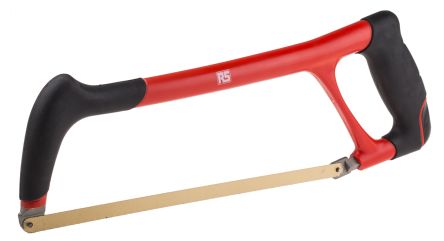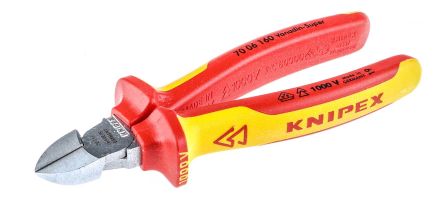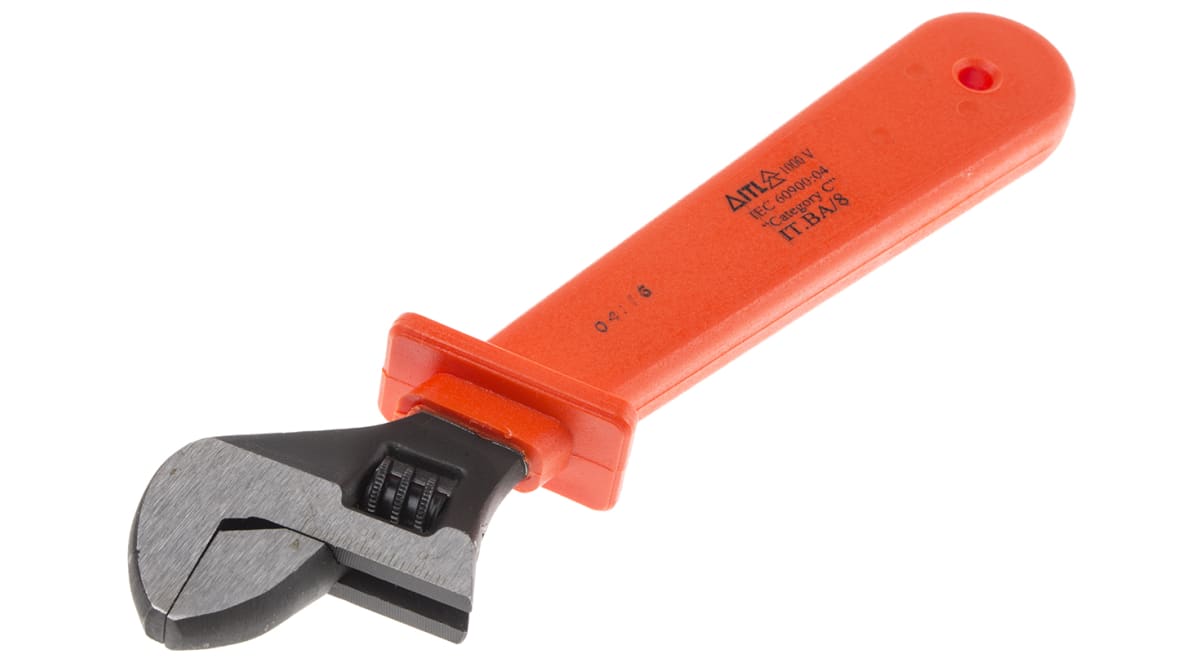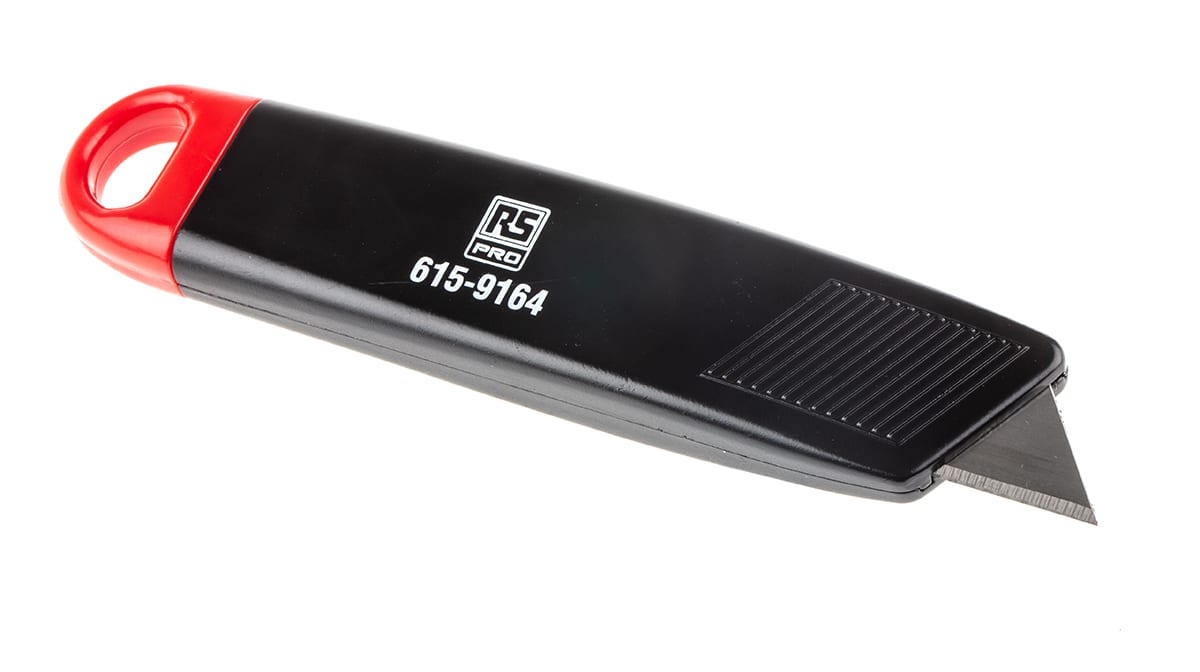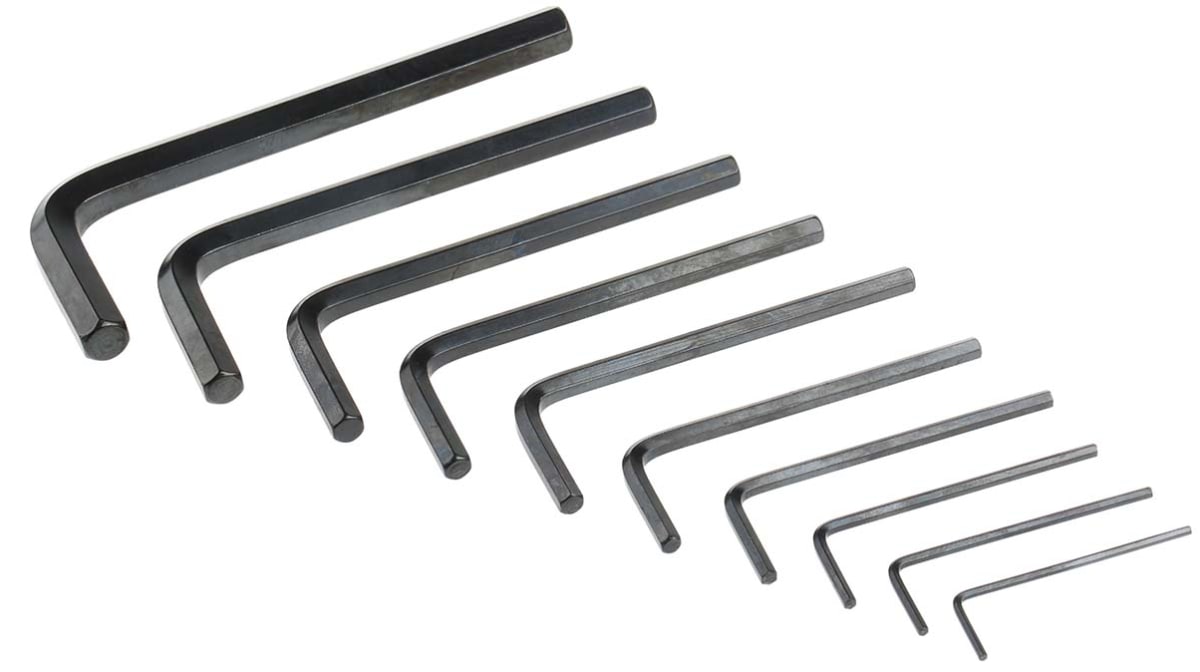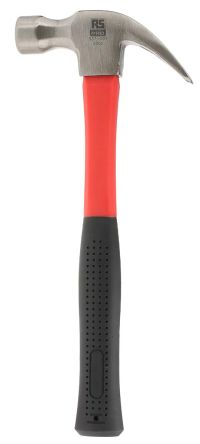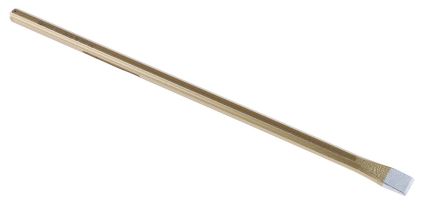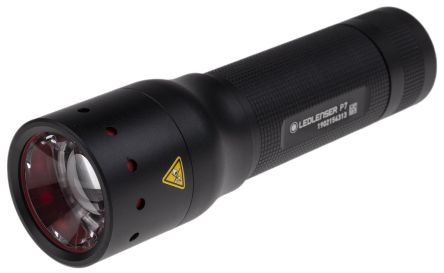Top 13 Tools for the Best Electricians Tool Kit
Check off 13 essential items to build your electricians tool kit with the help of this guide.

Tool kits are every electrician’s trusty companion, you take them with you to every job and rely on the tool to apply your hard-won skills and deliver reliable and safe solutions. We've asked engineers what tools they keep in their kit and pulled them all together to create this guide to the best electrician’s tool kit essentials. All products are available from our own quality brand RS PRO.
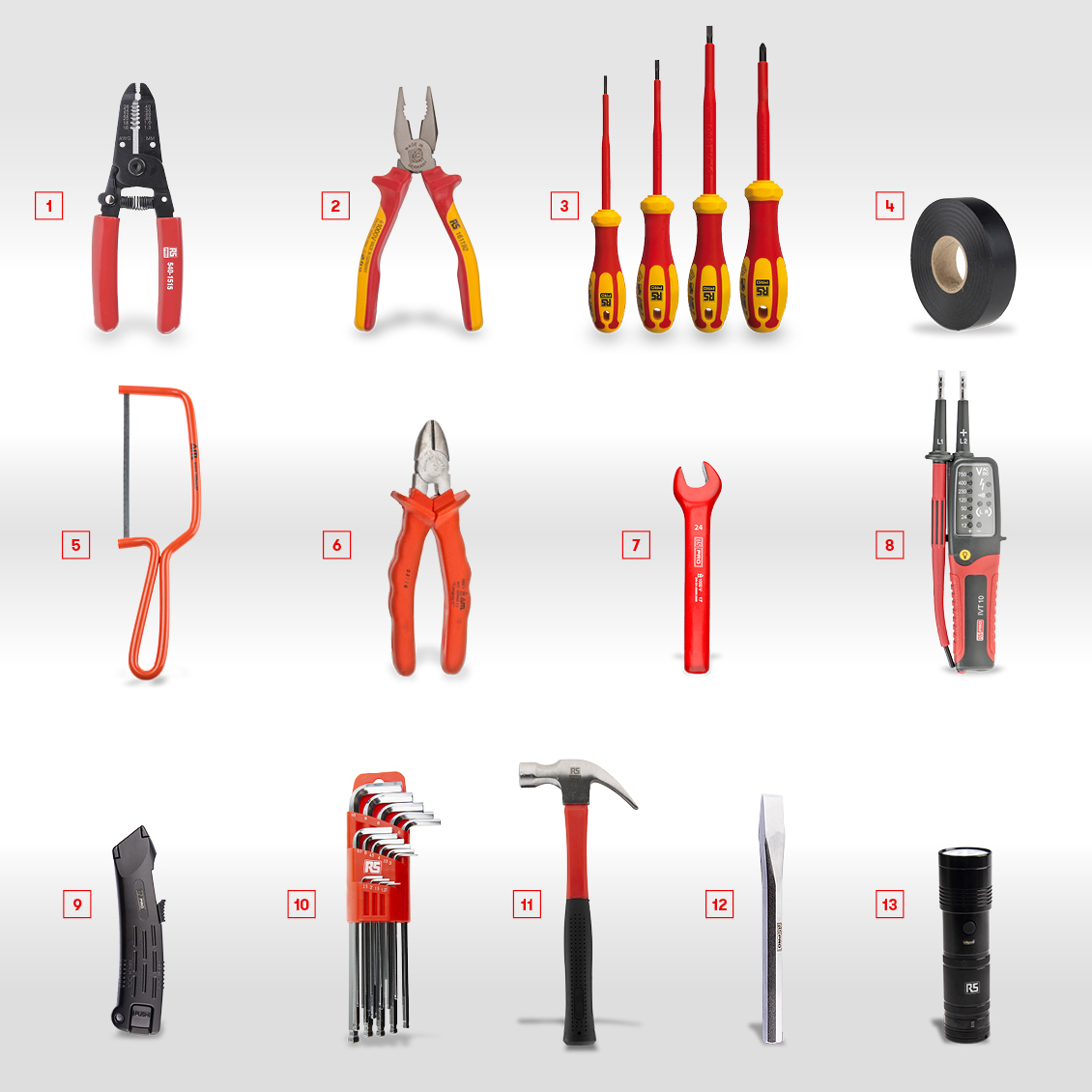
1. Wire strippers
Wire strippers are plier-like tools used to remove the insulating outer sheath from cables in order to attach terminals or connectors to the central core via crimping or soldering. Some strippers also allow electricians to cut right through the copper or conduit in a wire or cable.
Types of wire strippers
Multiple models and designs are available, including:
Adjustable strippers - these combine stripping with crimping and wire-snipping abilities.
Triple action wire strippers – these strippers are made for thicker cabling with tough insulation and can use a unique spiral cutting motion.
Wire stripper pliers – these feature V-shaped stripping jaws for thicker, multicore cables.
Sheath stripper – these use a rotary action and produce a neat ring cut.
Pistol wire stripper – these strippers have a self-adjusting blade and use a compound stripping action with a firm grip.
Automatic wire strippers – these use a mechanism to remove insulation and cut wire rapidly, with a single application of pressure
Manual wire strippers – these are the standard, hand-operated model, but usually, include a spring-loaded handle and safety lock.

-
Alternative names:
- Cable strippers
- Cable wire strippers
2. Insulated screwdrivers
Screwdrivers work through the simple application of torque – rotational force – when the head of the screwdriver has been inserted into the slot on the screw. Electrician’s screwdrivers feature carefully designed, insulated handles to provide protective electrical resistance. This will be indicated by VDE approval.
Driver tips are the key point of differentiation. Amongst the most prominent are:
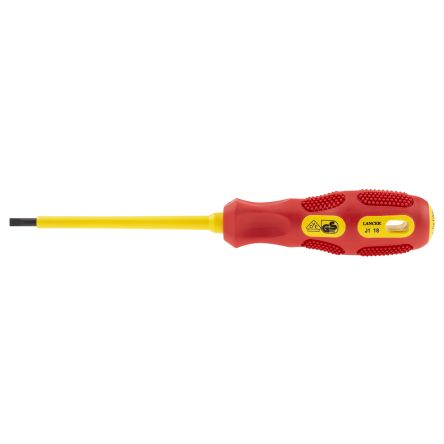
Slotted Screwdrivers

Philips Screwdrivers

Pozidriv Screwdrivers
3. Insulated pliers
Pliers are another tool that has been with us for a long time. Their versatility means they can be used to accomplish a multitude of tasks requiring ‘torque’, working in a much more robust manner than would be possible with the use of bare hands alone.
Nowadays pliers are usually made from steel to provide additional strength to the grip exerted by the jaws.
Types of pliers
Pliers are available in a variety of designs for different specialist tasks. These include:
Long nose pliers- these have long tapered jaws making them ideal for gripping small objects.
Combination pliers– these feature a design that combines wire cutting, insulation stripping and gripping functions in a single tool.
Water pump pliers– also known as slip joint pliers, tongue-and-groove pliers and adjustable pliers (among other names), these tools feature a movable lower jaw, allowing the span of the grip to be adjusted. They are ideal for use with nuts, bolts and fasteners.
Side-cutting pliers– also known as wire cutters, these are typically used with wire. A variant called diagonal cutters applies different finishes to the cut wire.
Mole grips/ locking pliers– these are ideal when working with metal.

-
Pliers are ideal for:
- Gripping
- Twisting
- Clipping
4. Electrical tape
It is also made from different materials, including PVC, vinyl, copper foil and glass cloth. Different varieties feature varying colours, widths, thicknesses, temperature tolerance, adhesion strength and insulating capabilities.
The colours help electricians select the correct type and also enable them to colour code the wires they are working with.
Black tape is the most widely used colour - for general insulation and in order to indicate the low voltage neutral point in a circuit. Meanwhile, in the UK green and yellow tape typically indicate the protective earthing point. Blue tape is usually used to colour code low voltage neutral wires and red marks low voltage AC wires.
5. Hacksaws
Full sized hacksaws typically feature 12-inch blades. Meanwhile junior hacksaws are typically much smaller, with even finer teeth designed for more precise work.
6. Cable cutters
Different models enable cuts of different kinds, from straight multi-purpose designs to those made especially for flush cutting or diagonal slicing. Fully insulated models are suitable for use with high voltage wiring, electrical equipment and environments high in electrostatic discharge, making them an ideal choice for electricians.
Look for models with an ergonomic grip to improve ease of use and try to avoid using particular models on material that is too hard. Look for their cutting capacity, which ranges from 0.4mm to 600mm.
7. Spanners
With so many different sizes of bolt and nut, a similar variety of spanner designs are available to ensure a close fit between the head which applies torque and the fixture in question. Size is equally important in order to achieve a tight grip.
Common spanner models include:
Adjustable spanner -As the name suggests, these feature a moveable jaw which can be adjusted to fit different sized bolts or nuts. The monkey wrench is the best-known form of adjustable spanner.
Open-ended spanners -These spanners have a double C-shaped clamp in different sizes at either end and are useful when space is limited.
8. Voltage tester
The presence of voltage is indicated by the illumination of a light-emitting diode. If this light appears, electricians know to shut down the current before beginning work. This is a vital safeguard and one required by health and safety legislation. Most voltage indicator models feature redundant circuits and resistance to electrical surges for additional safety.
9. Safety knife
Like all tools, safety knives come in a variety of shapes and sizes for use in different situations. Professional safety knives suitable for use by electricians typically feature handles made from aluminium, plastic or steel, and the blade itself will be stainless, carbon or tool steel for maximum cutting power. Blades are usually replaceable when they break or go blunt.
10. Hex keys
Straight hex keys are used as extensions to screwdrivers and allow these to apply torque to hexagonal fastenings.
L-shaped keys have identical heads at either end so they can be used either way round, but with differing leverage: the shorter end provides more while the longer end allows access to more confined spaces. As the name suggests, folding hex keys can be stored easily.
Finally, the handles on the T-handle variety are more ergonomic, allowing a firmer grip to be applied.
11. Claw Hammer
Claw hammers are useful to gain access to sealed spaces – for example, fuse boxes hidden behind the panelling.
12. Chisel
Electrician’s chisels are a specialist variation used to cut channels in walls during installation procedures. Popular sizes to keep in your tool kit include:
- 5mm
- 10mm
- 16mm
- 18mm
- 20mm
- 50mm
13. Torch
The job of the torch to electricians is a simple one: they allow work in darkened areas, for example, a building in which the lighting has failed or the power is switched off. Head torches attached to helmets or hats may be required if both hands are needed for precise work.
Product Spotlight - RS PRO 32 Piece Electricians Tool Kit VDE Approved
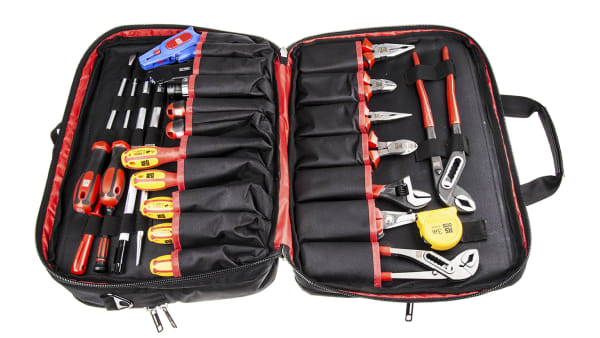
If you are looking to buy a fully assembled quality tool kit, then our RS PRO 32 piece Electrician's tool kit is ideal for you. It has been designed for professional electricians and engineers.
The tool kit offers a selection of the most popular hand tools, including VDE screwdrivers and pliers tested up to 1000V, as well as useful additions including a measuring tape, safety knife and torch. All supplied in a durable tool bag.
FAQs
Which tools does an electrician or electrician’s apprentice need?
There is no one-size-fits-all answer to this question. It depends on the type of work they regularly carry out but the tool kit fundamentals would certainly be:
-
Appropriate electrical tape
-
Insulated screwdrivers
-
Insulated pliers
-
Cable cutters
-
Voltage testers
What are the best electrician’s screwdrivers?
The best electrician’s screwdrivers are fully insulated against electrical shocks: an obvious safety hazard. Look for those with accreditation from the Verband der Elektrotechnik, Elektronik und Informationstechnik (VDE) – the German Association of Electrical Engineering, Electronics and Information Technology, which provides an internationally recognised standard for electrical safety.
The same principle applies to the other tools used by electricians: properly insulated tools are a safety basic.
How much do electrician’s tools cost?
RS Components is an international supplier of quality tools and electronic equipment, we can provide expert guidance on all your tool kit requirements, and even custom tool kits and bags if required. It is not necessary to buy everything at once – you can develop your kit over time as finances permit and work dictates.
Other Useful Guides
Pliers Guide
From circlip to long-nose pliers, our buying & user guide will help you choose the best pliers for the job.
Electrical Safety
Our guide covers the dangers of electrical equipment in factories and other industrial environments and how to manage to risks.
Electrical Tape
In this guide, we’ll look at some of the specific uses for insulation tape, its key safety features, and a number of the most common types.
Thermal Imaging
Thermal imaging cameras can be used for inspection work and for hot spots in panels, read more about their uses in our guide.

